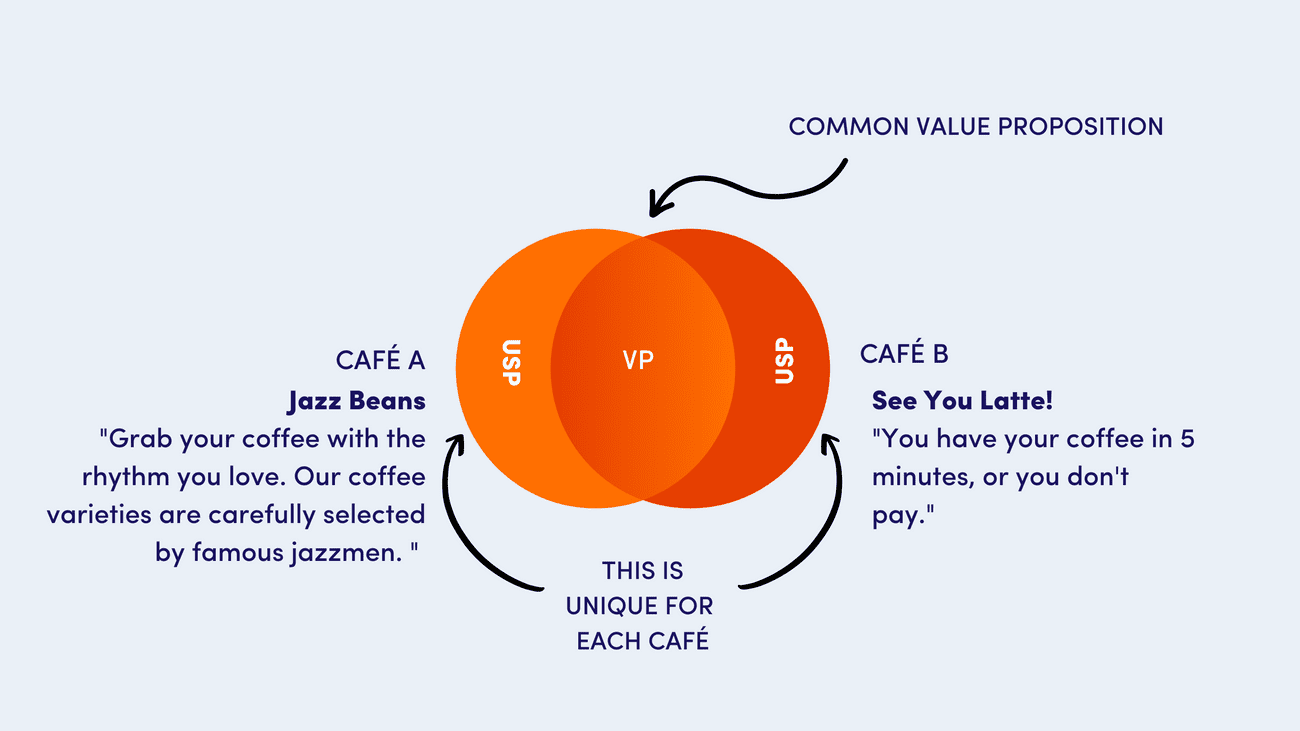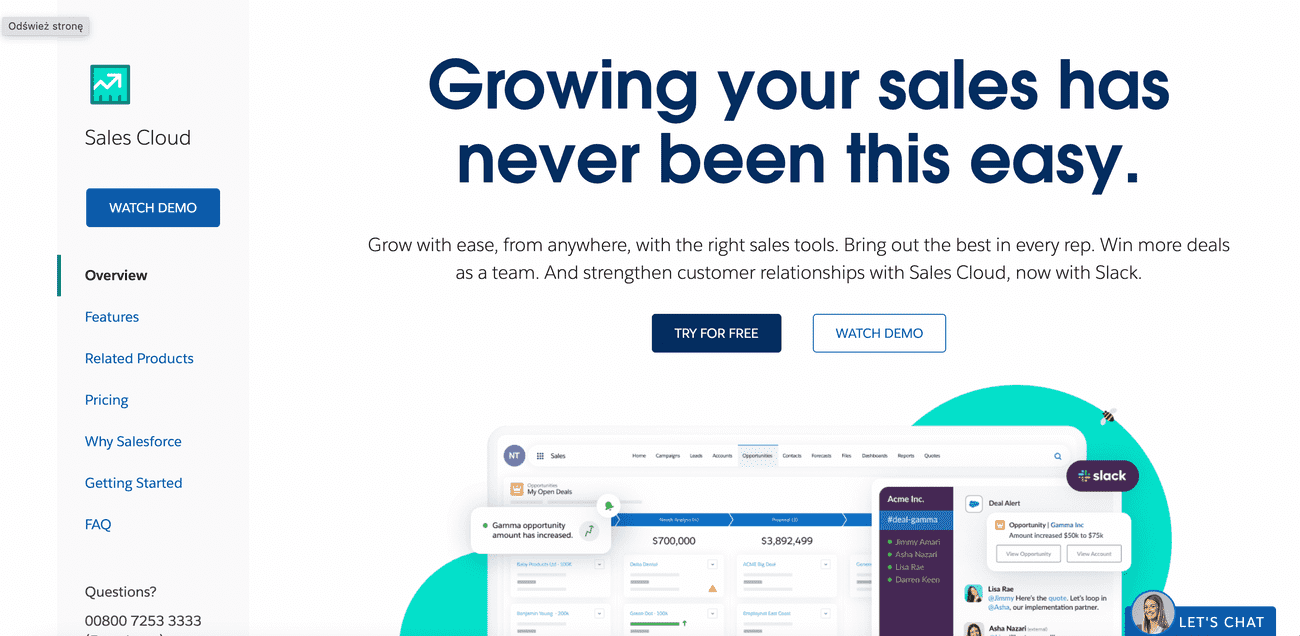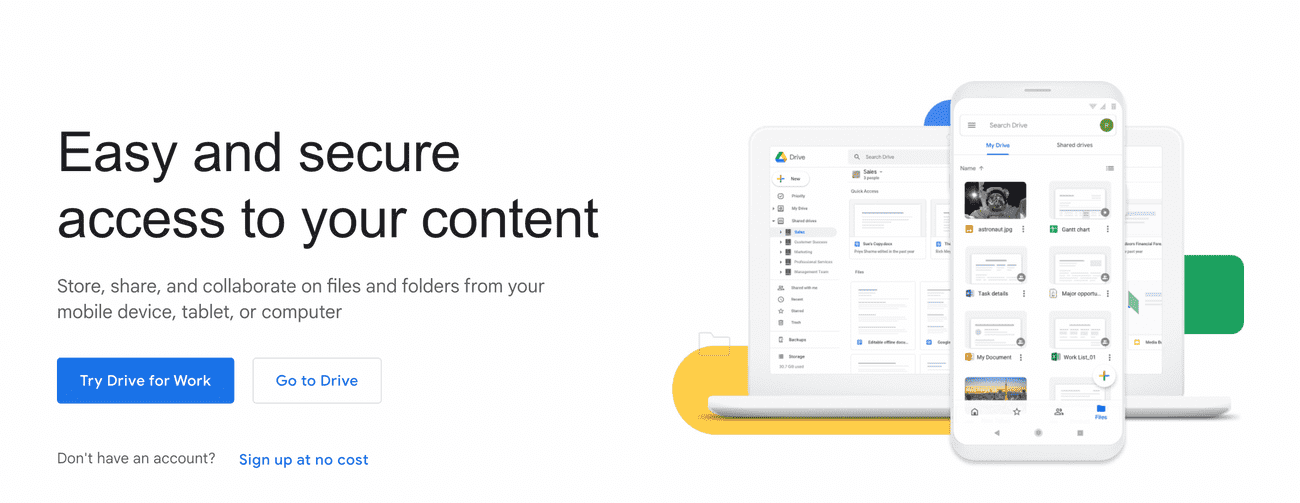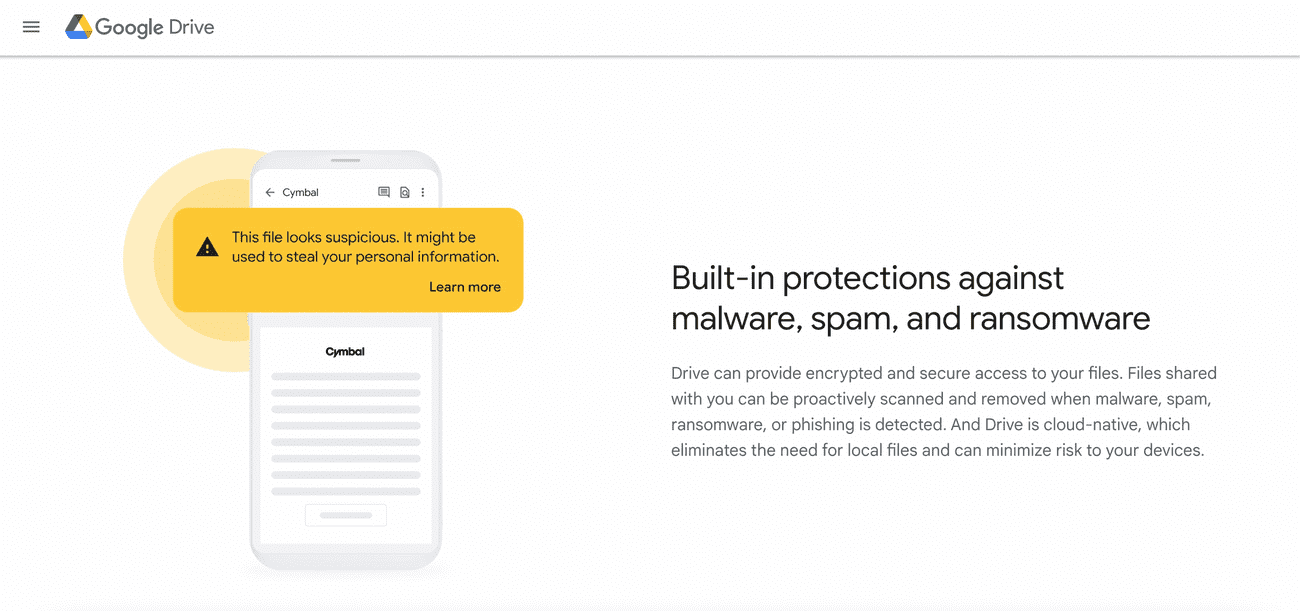Unique selling point vs value proposition
Every company wants its products to be seen by customers as something of value, something worth investing time and money in. At the same time, the fiercely competitive marketplace makes it clear it's difficult these days to create something that really stands out.
Once you've managed to find that sweet spot, it can be even more challenging to dress those differentiators into communications that will convince customers.
In today's article, we'll show you what a USP and a value proposition are, and what you can do to use both, respectively, to achieve your goals.
What is a unique value proposition?
Value Proposition is something that shapes a business model. It's a kind of declaration that we as a company will deliver to the customer what will solve their problems. In other words, it's usually a short, one-sentence statement about what value our company and its product can bring to the customer's life. It helps answer the question "What do you do?"
The Unique Value Proposition also provides an important guidepost for the business because it allows owners to stick to the designated paths for the business to follow to solve customers' problems.
If a company is in the business of helping to organize documents in a unique way, it will not be in the business of doing advertising for customers as part of the same activities.
UVP focuses on clients' pain points and allows them to show what tangible results clients will get from using our solution.
We told ourselves that UVP shows value to target customers, but to have the right effect, we also need to show our target audience why they should use exactly what we sell. To get that effect, we need a unique selling point.
What is a unique selling proposition?
The term Unique Selling Proposition (USP) was coined by Rosser Reeves, an American marketing specialist whom history recognizes as a pioneer of television advertising. Reeves knew that with increasing competition and market penetration, it would be harder and harder for companies to draw customers' attention to products.
A Unique Selling Proposition (or USP) is something every good sales team uses regularly in their conversations, and marketing departments use in their marketing efforts. It helps us show the customer why they should care.
The USP turns the UVP into something that allows the ideal customer to understand why the company or product is right for them. It is something that comes from a good understanding of the target market and your customers' pain points.
Creating a good Unique Selling Proposition allows each successful business to stand out and gain a competitive advantage because customers look at the company from a completely different angle.
When creating a strong unique selling proposition, it is very important to choose a benefit that is perceived by the target audience as something of real value. For example, let's imagine that we are a manufacturer of a mid-market car brand, and we know that for our prospective customers, besides price, safety is an extremely important value.
So in our marketing materials, we can emphasize this feature, which will resonate with customers who come into contact with our brand.
What is the relation between USP and value proposition?
At first glance, you may think that USP and value proposition look similar and are the same thing. Both concepts can be considered marketing messages that speak directly to the target market. They speak to your customers' problems and challenges, making new customers feel that your business understands their every pain point. However, they're not the same.
Every company needs the right product or service values that are important to customers. A value proposition focuses on showing customers very specific, tangible benefits of using the product. The problems that the product solves are made visible.
At the same time, very often companies use specific numbers or percentages to show the results that are obtained from the solution. When the customer reads this information, he or she thinks, "Oh, that means they help me get such and such a result."
What the VP doesn't emphasize, however, is how these benefits and the company stand out from other solutions on the market. The purpose of a USP, then, is to create a clear differentiator that distinguishes and positions your entire business in the market.
So, it's safe to say that the USP is part of the VP because it shapes its character. Since USP is something that distinguishes a company, many times organizations share the same VP, but may not share a USP. Otherwise, they wouldn't distinguish themselves from each other.
For example, most coffee shops can tell their customers that they provide tasty, highest quality on-site and takeaway coffee, which they make in minutes. These are the elements that are usually included in this type of business model.
However, not all of these chains can make a clear statement that they serve the world's strongest coffee. This is definitely a product-level differentiator that lovers of strong flavors will choose.
Examples of well-crafted unique selling propositions and unique value propositions.
In today's fiercely competitive and saturated market, companies that can create and properly highlight their unique selling proposition are winning. They win because they provide customers with the right value that is different from the rest of the solutions.
However, without properly highlighting their values on their website, businesses would not be able to create the right impact. So, let's look at some examples of businesses that do this really well.
Salesforce
Salesforce has received widespread recognition worldwide for its cloud platform, as well as marketing automation, and is recognized for its CRM system.
Their software is implemented by a vast number of businesses around the globe. What makes their solution stand out?
Like any successful business, Salesforce is focused on its own unique selling proposition making sure its target customers see a distinct difference in what they get.
Right from the start, the company emphasizes it will help you grow your business using its system, which it bravely calls the No. 1 in the world. When we look further at what Salesforce describes, we see that every strong value proposition on the site supports the company's USP.
When you look further at what Salesforce describes, you see that every value proposition on the site supports the company's USP.
For example, in describing the Sales Cloud solution, the company emphasizes that selling has never been so easy, and this is thanks to a few specific value propositions you receive as customers.
Salesforce also strongly emphasizes how having all the data on one platform allows the customer to be confident in what is being done. In a world where businesses use a variety of solutions and often get lost in what to connect to what, emphasizing the ease that comes from unifying everything shows the value that is important from the customer's point of view.
Google Drive
Interesting software with a strong unique selling proposition is Google Drive. The solution, which is used by millions of companies around the world, has firmly established itself in business, where the right benefit for good money is valued.
The strong USP of this solution focuses primarily on the fact that the user is assured of security while having easy access to their data. At the same time, a variety of devices such as a computer, tablet or smartphone can be used to use this solution, which undoubtedly shows that access to the data is also possible from anywhere.
In the world of online business, which is vulnerable to cyberattacks, there is a strong focus on security. Losing data can cost a business not only its reputation but also result in severe legal consequences. In this regard, the developers of Google Drive undoubtedly emphasize the great value of an encrypted drive that provides an adequate level of security.
In this way, the manufacturer of the drive clearly distinguishes itself from other solutions that only allow users to keep files in the cloud without any security.
Saddleback Leather
Another interesting example of a unique selling proposition is the USP of Saddleback Leather, a leather goods manufacturer. Right at the beginning of the website, we see the company's clear statement, which emphasizes its approach to quality: "THEY'LL FIGHT OVER IT WHEN YOU'RE DEAD".
This is a clear message which shows that users can count on the quality of the products being so good that the things they purchase will be usable even after they die.
In addition, in marketing materials, the company briefly emphasizes a 100-year warranty, a lack of breakable parts and an advanced design of the products. These are undoubtedly very tangible, unique values for customers, who can be sure the products will stay with them for a long time.
Where can you use a unique selling proposition and value proposition?
Once you have created your unique selling proposition and unique value propositions, you will be able to use them extensively to demonstrate your business to customers from the best side.
Your USP describes how your company stands out from the competition, while your UVP helps visualize your key brand promises that focus on solving their problems. Therefore, no matter where you promote, if you want to gain a competitive advantage, your company needs both.
Both unique value propositions and unique selling propositions can and should be used in marketing materials on your website, on social media, on your blog and also in all places where your brand appears.
At the same time, you'll also be able to use these things in face-to-face conversations with customers, in networking meetings, and in presentations, if you make any.
What do you need to create a unique selling proposition?
If you want to attract the ideal customer, you need to create a noteworthy USP that highlights each unique aspect of your offer. To achieve this, you have to meet several conditions:
Think like your target customers
If you aim to make something that will be unique to your customer, you must know what they care about, how they think, what is important to them, what challenges they have, etc. Start analyzing the market, listen to your customers and think about what motivates them to buy. At the same time, think carefully about what the customer would like to avoid and what might make them switch to your site.
Focus on the solution to the problem, not the product
The days when customers bought products without much thought are long gone. Customers are not interested in your product. They are interested in what specifically your services will give them - what needs it will satisfy, what problems it will solve.
Think about how you can help your customers in a unique way
Once you know what customers need, you need to find a differentiator that will become the basis of the promise your brand will make to its customers. Guarantee a unique thing that the competition does not deliver.
How do you build a good UVP?
To have a unique sales approach, you undoubtedly need to show new customers very specific tangible results they will get by using your product or service. Every value should build a specific benefit in the eyes of the customer.
Precisely approach the problems of your target market
When creating a unique value proposition, you should focus on showing customers that you understand their problems and that your product or service addresses their daily challenges and delivers specific results in that context.
Be unique
Solving the customer's problem is important. At the same time, you need to remember that you are not the only company in the market, and quite a few other organizations are fighting for your customer's attention every day. Therefore, even if you are going to solve a customer's problem in a similar way to your competitors, you should approach the challenge creatively enough to show customers that there is a difference between how your company does it and how your competitors do it.
Instill a desire to achieve an outcome
Do it in such a way that they feel that the result is within reach and that achieving it will allow the company to achieve above-average results. Make the customer not only feel that you want to solve the problem, but also that you care about those remarkable results.
Use numbers whenever you can
The most effective distinctive value propositions are founded on definite, quantifiable outcomes. To demonstrate to customers that you are assisting them in achieving results that meet their needs, include percentages or numbers in your marketing messages.
Focus on crucial issues
The most important foundation for a unique value proposition is to offer clients solutions to their particular concerns. Customers consider something to be valuable if it will result in the desired improvement in their life. It is great if you draw attention to the sensitivities more.
Identify the audience for your communications
The target market for your company model should be properly defined. You will be able to comprehend the issues and produce value that is significant to your clients if you approach it more narrowly. A product or service that tries to appeal to everyone is ultimately for no one, as all of your marketing efforts will fall flat with the target market.
Summary
Any effective business strategy should demonstrate to customers the value it offers and make it abundantly clear why a certain commodity or service is worthwhile. You must create a distinct value proposition and a unique selling proposition for your firm in order to do this, as they are crucial components for differentiating your enterprise. Your business requires both.
Relying on client needs and problems you can address is undoubtedly one of the most crucial aspects of developing a USP and UVP. It would be wise to draw inspiration from organizations that have successfully developed their USP and UVP to the point that they are currently at the top of their respective industries. If you want to learn more about value propositions in SaaS businesses, check out this article.










